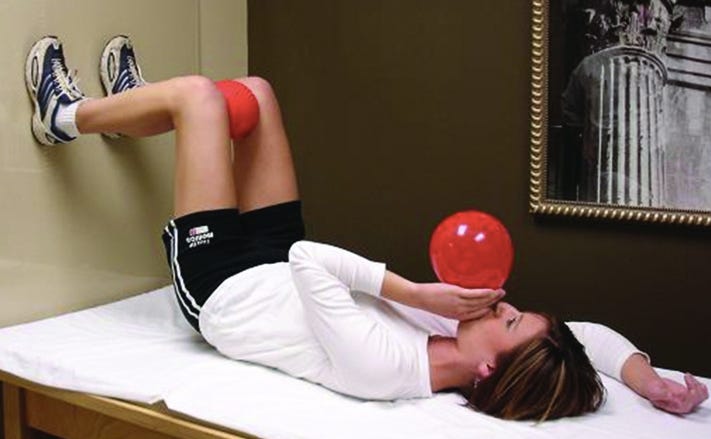Why Your Hamstrings Feel Tight (And Why Stretching Isn’t the Answer)
Think your hamstrings are tight because they need more stretching? It might be time to reconsider.
Why Your Hamstrings Always Feel Tight—and Why Stretching Isn’t the Solution
Have you ever felt that nagging tightness in your hamstrings, only to be told to stretch it out? Maybe you’ve spent countless minutes—or even hours—doing hamstring stretches, only for the tightness to creep back in. Let’s take a closer look at what might actually be going on and why more stretching might not be the answer.
The Real Role of Your Hamstrings
Most people assume that tight hamstrings simply need to be stretched. It’s a common approach in fitness and wellness spaces. But what if I told you that the constant tight feeling could actually be the result of overstretching or compensating for deeper imbalances?
Hamstrings play a huge role in stabilizing the pelvis. They’re not just there to bend your knee or extend your hip—they’re part of the foundation that keeps your body aligned. What’s often overlooked is that the hamstrings attach at the bottom of the pelvis at the ischial tuberosity (aka the "sit bones"). This connection is key because it allows the hamstrings to influence and control the position of the pelvis.
When hamstrings are overstretched or improperly engaged, they lose this stabilizing effect. As a result, they start to feel tight as they work overtime to hold everything in place. It’s a bit like overloading a support beam—it can only handle so much before it starts to strain.
This is particularly true when the pelvis is misaligned, a common issue that disrupts balance and forces the hamstrings to overcompensate. That’s why engaging the hamstrings in specific ways to stabilize the pelvis is crucial for achieving proper alignment and long-term stability.
The Pelvic Imbalance Behind Tight Hamstrings
A common postural asymmetry, known as the Left Anterior Interior Chain (Left AIC) pattern, provides insight into why tight hamstrings are so persistent. This pattern describes a natural tendency for the left side of the pelvis to rotate forward and downward, while the right side remains more neutral.
In this position, the left hamstring has to work harder to stabilize the pelvis and prevent it from tipping further forward. Over time, this overcompensation leads to a sensation of tightness—not because the hamstring is short, but because it’s overstressed in its role as a stabilizer.
Building on this, the PEC (Posterior Exterior Chain) pattern, as described in PRI®, involves bilateral overuse of extensor muscles, including the hamstrings, glutes, and spinal erectors. This often happens in individuals who rely heavily on extension to stabilize their posture. In a PEC pattern, both sides of the pelvis are pulled into an anteriorly rotated position, creating constant tension in the hamstrings as they attempt to maintain pelvic stability.
Together, these patterns reveal how pelvic imbalances lead to hamstrings working overtime—not as primary movers, but as stabilizers trying to compensate for misalignment. Addressing these patterns involves reestablishing proper breathing mechanics, activating other stabilizing muscles like the left hamstring, and retraining the body to achieve better balance and alignment.
Why Stretching Can Make Things Worse
When we’re constantly stretching the hamstrings, we’re signaling the nervous system to relax the muscle temporarily. Sure, you’ll get a short-term feeling of relief, but it’s only a matter of time before the tension returns. Why? Because the underlying issue—a misaligned pelvis—hasn’t been addressed.
Stretching can even weaken the hamstrings’ ability to perform their stabilizing role, worsening the imbalance over time. The real solution lies in realigning the pelvis so the hamstrings can relax naturally, free from the burden of overcompensation.
A Better Approach: Activating, Not Stretching
Instead of stretching tight hamstrings, focus on activating them. This "tighten to loosen" approach might seem counterintuitive, but it works because engaging the hamstrings in specific positions helps them stabilize the pelvis. Once the pelvis is better aligned, the hamstrings naturally relax.
There are 700 techniques that can help with concepts like this. One highly effective exercise for this is the 90/90 Hip Lift, a cornerstone of many known Postural Restoration techniques. In my RootedWell Foundations course, we explore 18 different PRI® techniques in depth. And in RootedWell Live, we host monthly live calls dedicated to breaking down these specific techniques.
By practicing regularly, you'll not only retrain your hamstrings to function properly but also help rebalance your nervous system for overall alignment and wellness.
Photo courtesy of PRI®
The Added Benefits of Proper Body Positioning
When your pelvis is aligned and your hamstrings are properly supporting it, the benefits extend far beyond movement:
Improved Breathing: Aligning the pelvis and ribcage allows the diaphragm and pelvic floor to work together smoothly, enabling deeper, more efficient breaths.
Stress Reduction: Better breathing mechanics promote relaxation and help regulate the nervous system, reducing stress.
Enhanced Sleep: A properly aligned body and improved breathing can also lead to better, more restful sleep.
In Summary
Hamstring tightness is often a sign of overcompensation due to pelvic imbalances, such as the Left AIC pattern - Postural Restoration
Stretching (maybe) provides temporary relief but doesn’t address the root cause.
Aligning the pelvis and sensing/activating the hamstrings restores stability and relieves tension.
Improved alignment benefits both movement and breathing, enhancing overall wellness.
So, the next time you feel that tightness creeping in, resist the urge to stretch it out. Instead, focus on repositioning! Try something different. Your hamstrings—and your whole body—will thank you!
Like what you just read? 👉🏼 Join RootedWell to explore even more techniques that help you realign, reposition your pelvis, and build lasting stability.
Keep Learning,
Aleena




